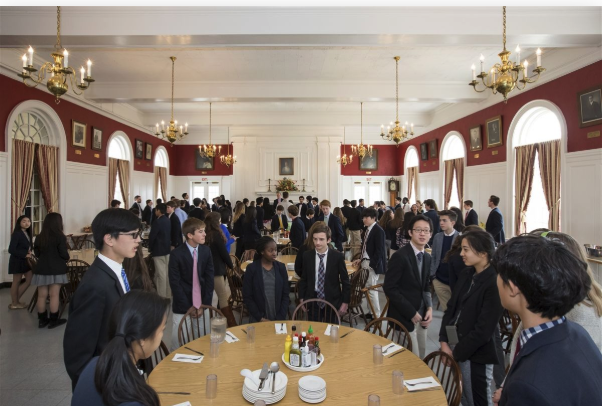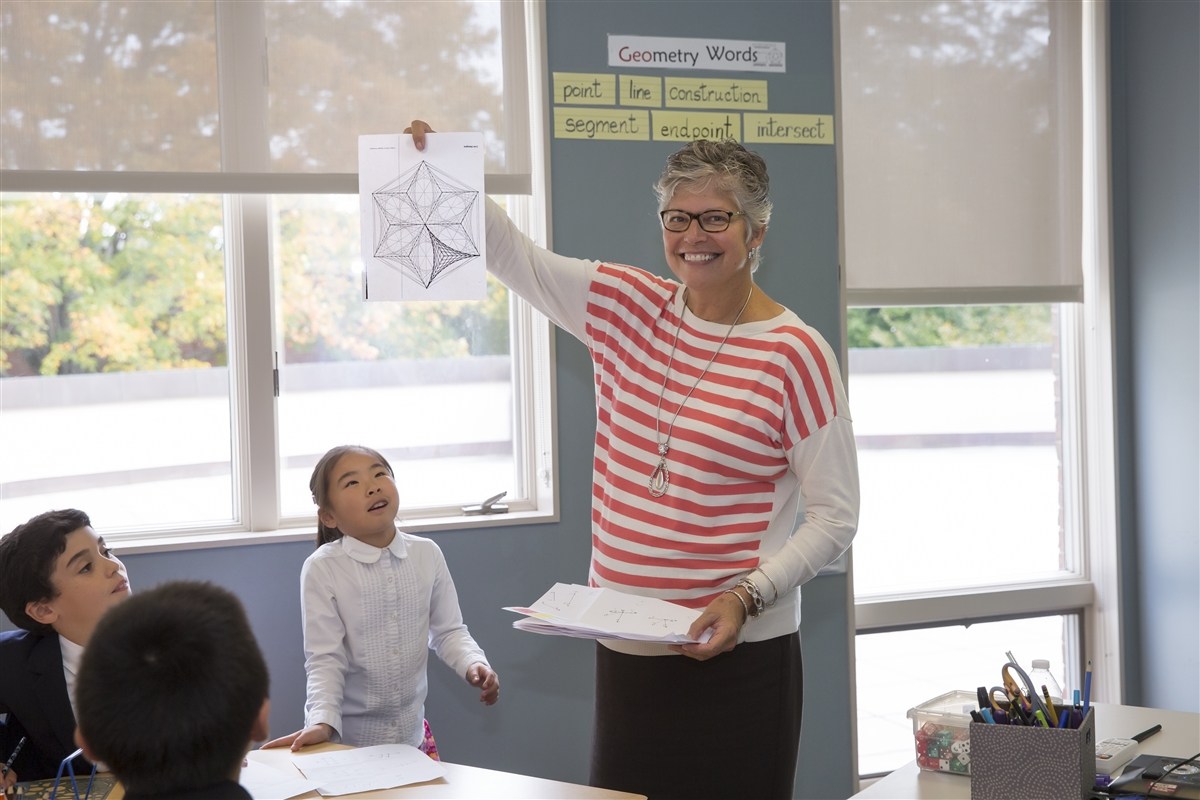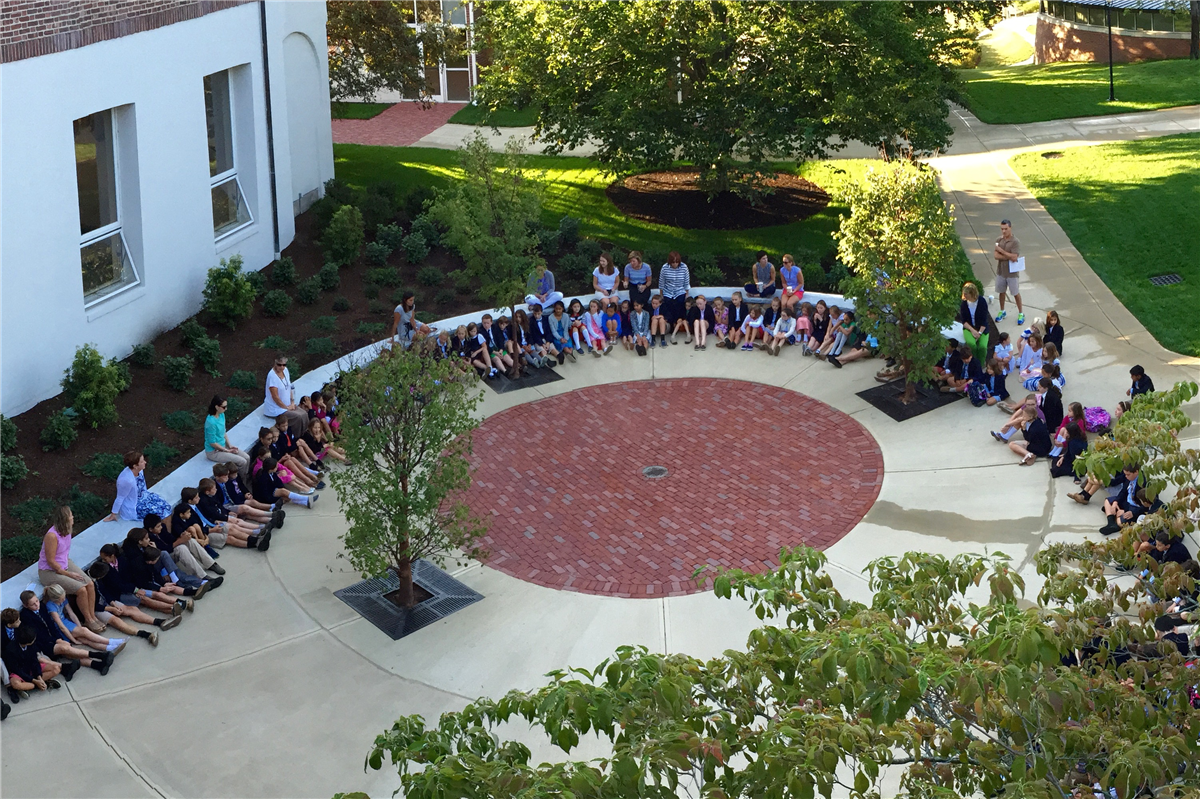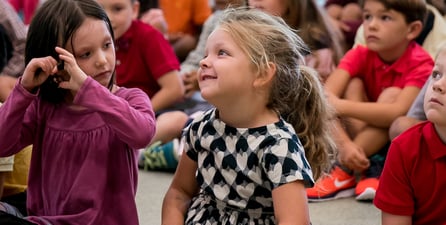To many parents, observing a kindergarten teacher at work in a well-managed classroom is like watching a master magician conjure a baffling trick. Somehow, they can hush twelve wiggly, giggly, boisterous five-year-olds with a single phrase and get those same students to perform a series of tasks that would take the average parent an afternoon to accomplish. How do they do it?
While it may look like magic, Fay kindergarten teachers Anne Canada and Lee Bogaert explain that they use techniques honed over years of working with kindergarteners. Those strategies are combined with empathy for the developmental perspective of a five year-old and plenty of patience! “It’s not always easy to listen to people, but you have to practice to get better at it,” says Anne.
Anne and Lee have shared with us some tips and techniques that parents can use to get their child ready to be a great listener in their Kindergarten classroom - and who knows, maybe at home too!
Reinforce the ‘one voice at a time’ rule
Kids want to be heard and listened to, but in a busy classroom, not everyone can be heard at once! “We always say, ‘There’s one of us and eleven of you, so you have to listen first, and then ask questions,’” says Anne. Instead of allowing children to talk over other people, Anne and Lee suggest teaching them useful interjections like “excuse me” to help them gracefully enter a conversation, ask questions, or convey important information.
Develop a non-negotiable tone
Children need to understand when they must follow instructions without delay and when it’s okay to have a discussion. You can convey this with your tone of voice. For example, when the class is getting ready for recess, the tone that a teacher would use would not be the same as the tone they would use when exiting the classroom for a fire drill. “When you mean business, it helps to have a neutral, firm tone and speak slowly,” says Lee, “Even when you are frustrated, keep the tone neutral, repeat the directions, and don’t raise your voice. It doesn’t work.”
Give choices and explanations
The flip side to ensuring that kids listen when they must is giving them space to make their own choices when you can. “How many times a day are kids told what to do?” asks Lee. “Imagine if that was you!” In her classroom, Lee’s students know that there are times when they must listen for directions and times when they can choose what to play or how to accomplish a task. She is also mindful of always trying to provide explanations. “Kids’ natural curiosity always has them asking ‘why?’” says Lee. “They want to know why they can’t do something, and they will listen to explanations.” When you explain that they need to wash their hands to stay healthy or can’t throw a toy because it could hurt someone, it underscores that we ask them to listen for a reason.
Practice waiting
Many of the behaviors that interfere with good listening are rooted in impatience. After all, most five year-olds aren’t used to waiting to ask a question, share an opinion, or get up from their chair at home. But in a classroom of 10-12 students, patience is essential to hearing and following directions. “Kids will come up to my desk in the classroom, and I’ll be looking through papers or sending an email, and they have to wait until I can give them my full attention,” says Lee. She suggests that parents consciously create opportunities for their children to practice waiting at home.
Manage multi-step tasks
Once they get to kindergarten, students should be able to follow multi-step directions, but listening and practice are the keys to developing that skill. Lee and Anne suggest that you make multi-step directions part of your daily routine at home. For example, when you walk in the door, ask them to take off their shoes, hang up their coat, and wash their hands. Some simple practice like this can be excellent preparation for the classroom.
Model good listening
Kids need to know what giving undivided attention looks like, and parents are their first and best teachers. “It’s so important that parents model good listening by putting down the phone or other distractions and listening to their kids tell that story about Elmo for the nine thousandth time,” says Anne. “When parents show interest and engagement, then kids know that they are being heard, and they understand the reciprocity of that. ‘Mom listens to me, so I listen to her.’”
































